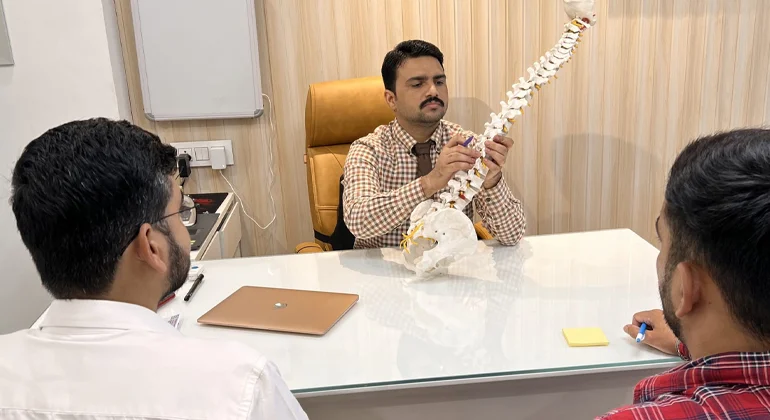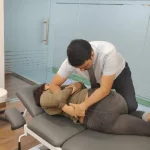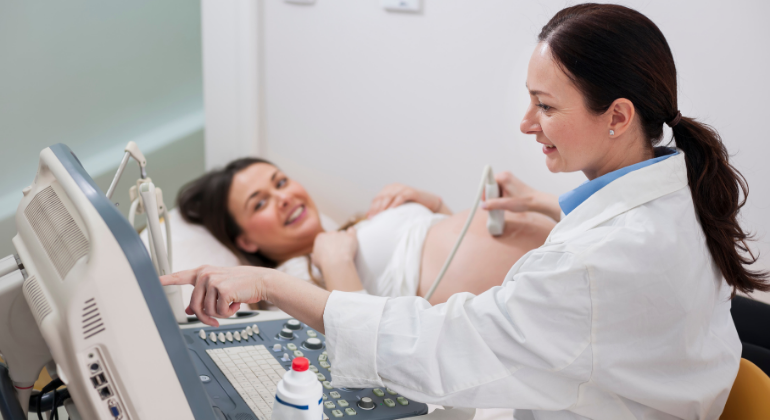Leading Best Spine Clinic in Gurgaon for Comprehensive Treatment
Living with chronic back pain can be debilitating, affecting every aspect of your life, from work to leisure activities. However, the Painflame best spine clinic in Gurgaon offers hope and a path to pain-free living for those suffering from spine-related issues. With a team of dedicated professionals and cutting-edge treatments, the institute aims to restore mobility, alleviate pain, and improve the quality of life for its patients.
Understanding Spine Health
The spine is the central support structure of the body, comprising a complex network of bones, muscles, ligaments, and nerves. When any part of this intricate system is compromised, it can result in various conditions such as herniated discs, spinal stenosis, or degenerative disc disease. These conditions often manifest as chronic pain, numbness, tingling, or weakness in the back, neck, or limbs, severely impacting one’s ability to function normally.
The Spine Clinic in Gurgaon recognizes the importance of comprehensive evaluation and accurate diagnosis in developing effective treatment plans. Through advanced imaging techniques and thorough medical assessments, they tailor their approach to each patient’s unique needs, ensuring personalized care and optimal outcomes.

Multidisciplinary Approach
What sets the Painflame Best Spine Specialist in Gurgaon, apart is its multidisciplinary approach to spine care. Here, orthopedic surgeons, neurosurgeons, pain management specialists, physical therapists, and rehabilitation experts collaborate seamlessly to address all aspects of spinal health.
Surgical and Non-Surgical Treatments
While surgery may be necessary for some conditions, the institute emphasizes conservative, non-surgical interventions whenever possible. This may include physical therapy, medication management, spinal injections, and lifestyle modifications aimed at relieving pain and restoring function.
When surgery is indicated, the Painflame best spine clinic in Gurgaon employs minimally invasive techniques whenever feasible. Minimally invasive spine surgery offers numerous advantages over traditional open procedures, including smaller incisions, less tissue damage, reduced blood loss, and faster recovery times. These advancements allow patients to return to their normal activities sooner and with less postoperative discomfort.
Patient-Centered Care
At the heart of the Gurugram Painflame is a commitment to patient-centered care. From the initial consultation to post-treatment follow-up, patients are actively involved in decision-making, empowered with knowledge and support every step of the way. The clinic values open communication, compassion, and respect, fostering a trusting relationship between patients and their healthcare providers.
Furthermore, the clinic prioritizes ongoing education and research to stay at the forefront of advancements in spine care. By continually refining their techniques and embracing innovative technologies, they ensure that patients receive the highest standard of treatment available.
Spine & Treatment includes:
Certainly! Here’s a detailed overview of the spine and treatments commonly used for spine-related issues:
Anatomy of the Spine:
The spine, also known as the vertebral column or backbone, is a complex structure consisting of 33 vertebrae divided into five regions:
Cervical spine: Located in the neck region, comprising seven vertebrae (C1-C7).
Thoracic spine: Found in the upper portion of the back, is composed of 12 vertebral segments labeled T1 through T12.
Lumbar spine: Found in the lower back, consisting of five vertebrae (L1-L5).
Sacrum: A triangular-shaped bone formed by the fusion of five vertebrae (S1-S5).
Coccyx: Commonly known as the tailbone, comprising four fused vertebrae (Co1-Co4).
Common Spine Conditions:
1. Low Back Pain: A common condition characterized by discomfort or pain in the lumbar region. Causes include muscle strain, herniated discs, degenerative disc disease, and spinal stenosis.
2. Herniated Disc: Also known as a slipped or ruptured disc, occurs when the soft inner material of a spinal disc protrudes through the tough outer layer, potentially compressing nearby nerves and causing pain, numbness, or weakness.
3. Sciatica: Refers to pain that radiates along the sciatic nerve, often caused by compression or irritation of the nerve roots in the lumbar spine. Symptoms may include sharp or shooting pain, tingling, or numbness down the back of the leg.
4. Scoliosis: A sideways curvature of the spine, which may be congenital or develop during childhood or adolescence. Severe scoliosis can cause back pain, difficulty breathing, and spinal deformity.
5. Spinal Stenosis: Narrowing of the spinal canal, leading to compression of the spinal cord or nerve roots. Symptoms may include pain, numbness, weakness, or tingling in the extremities, particularly with walking or standing.
Treatments for Spine Conditions:
1. Physiotherapy: Physiotherapy plays a crucial role in the treatment of spine conditions. Common physiotherapy interventions include:
– Manual Therapy: Hands-on techniques such as mobilizations, manipulations, and soft tissue massage to improve joint mobility and reduce pain.
– Therapeutic Exercise: Customized exercise programs to strengthen muscles, improve flexibility, and correct postural imbalances.
– Modalities: Heat therapy, cold therapy, ultrasound, electrical stimulation, and traction to alleviate pain and promote healing.
– Education: Instruction on proper body mechanics, ergonomic principles, and self-management strategies to prevent injury and manage symptoms.
2. Medications: Nonsteroidal anti-inflammatory drugs (NSAIDs), muscle relaxants, analgesics, and corticosteroid injections may be prescribed to relieve pain and inflammation associated with spine conditions.
3. Surgery: In cases where conservative treatments are ineffective or if there is significant nerve compression or structural instability, surgical intervention may be necessary. Typical procedures for spinal surgery encompass discectomy, laminectomy, spinal fusion, and the insertion of artificial discs.
4. Chiropractic Care: Chiropractors use manual adjustments and spinal manipulations to realign the spine, improve joint function, and alleviate pain associated with spine conditions.
5. Acupuncture: This alternative therapy involves the insertion of thin needles into specific points on the body to stimulate nerves, muscles, and connective tissue, potentially reducing pain and promoting healing.
6. Lifestyle Modifications: Practicing good posture, maintaining a healthy weight, engaging in regular exercise, and avoiding activities that exacerbate symptoms can help prevent and manage spine conditions.
7. Complementary Therapies: Yoga, Pilates, massage therapy, and tai chi may provide additional benefits in improving flexibility, strengthening core muscles, and reducing stress associated with spine conditions.
By combining these treatments, individuals can effectively manage spine conditions, alleviate pain, improve function, and enhance overall quality of life. It’s important to consult with healthcare professionals to develop a comprehensive treatment plan tailored to individual needs and preferences.
You don’t have to let chronic back pain control your life. The best spine clinic in Gurgaon (Painflame) offers hope and healing for those struggling with spine-related issues, providing a comprehensive range of treatments aimed at restoring function and improving quality of life. With a multidisciplinary team of experts, state-of-the-art facilities, and a patient-centered approach, the institute is dedicated to guiding individuals along the path to pain-free living. If you’re tired of living with back pain, it’s time to take the first step toward a brighter, more mobile future with the best spine specialist in Gurgaon.







